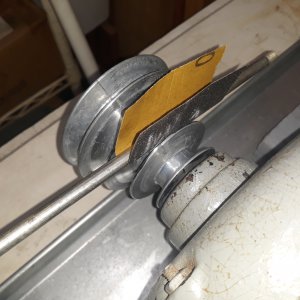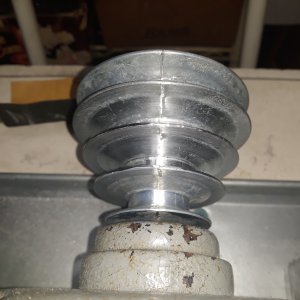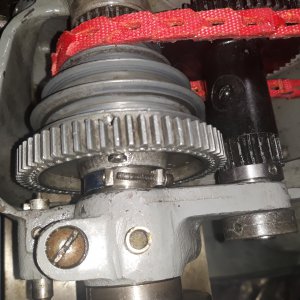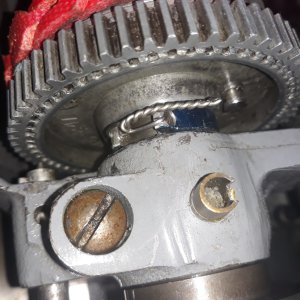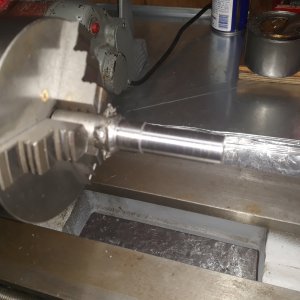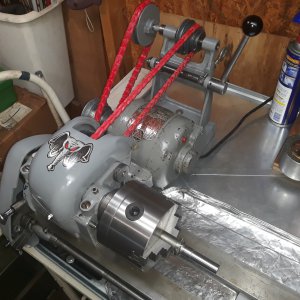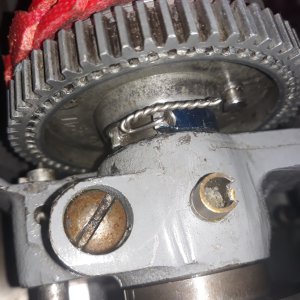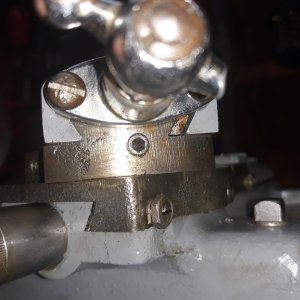- Joined
- May 26, 2015
- Messages
- 762
A little more busy work this morning. I was able to reduce the some vibration between the "cast" shieve of the motor with the link belt. Of course that small vibration is transferred thru the motor, to the table and them to the lathe. The casting joints of the shieve were a littIe raised up. I used a steel bar and 100 grit paper to sand the groove sides while the motor was running. Only did one groove as shown.
Attachments
Last edited:


